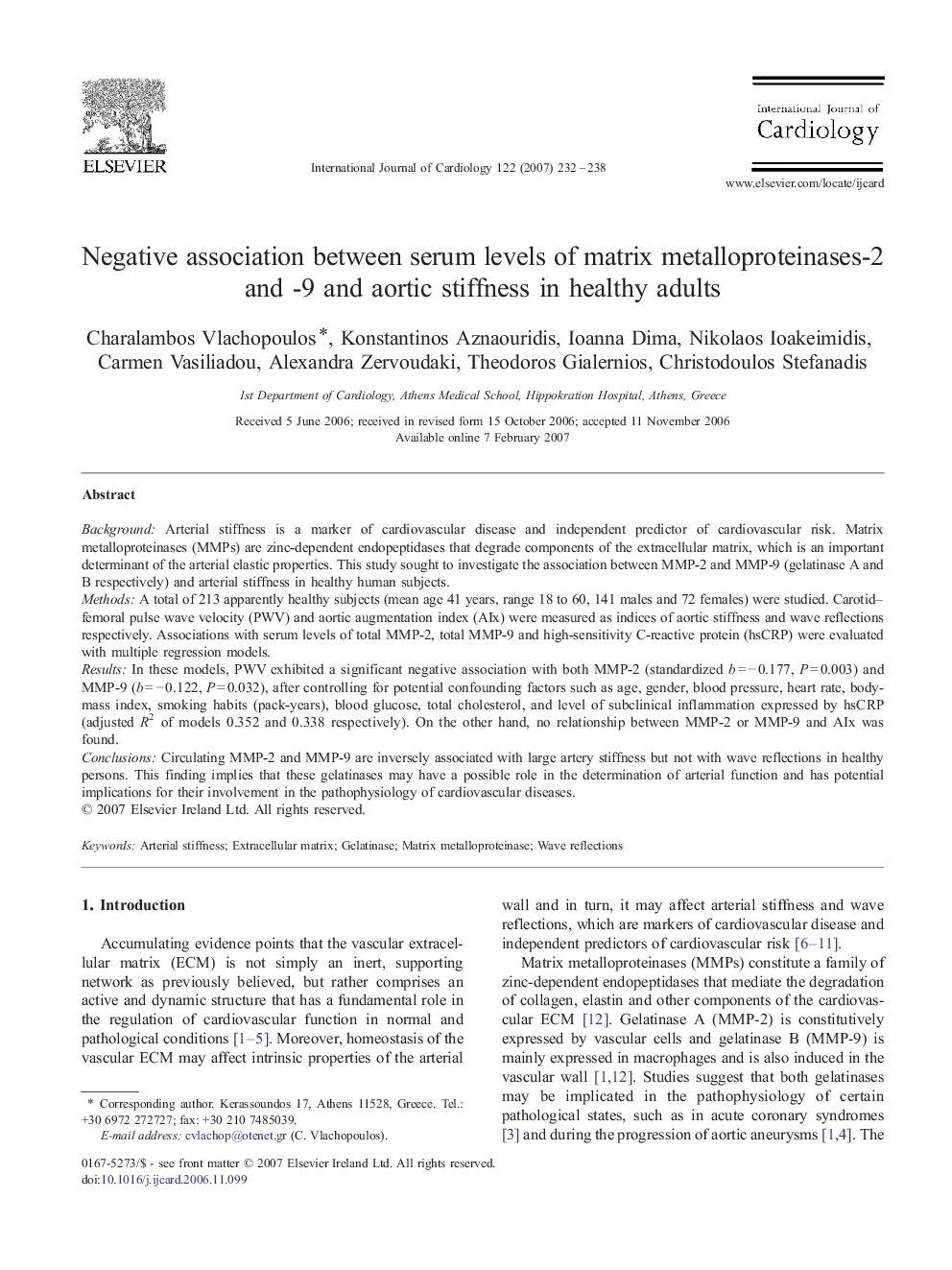| Article ID | Journal | Published Year | Pages | File Type |
|---|---|---|---|---|
| 2934390 | International Journal of Cardiology | 2007 | 7 Pages |
BackgroundArterial stiffness is a marker of cardiovascular disease and independent predictor of cardiovascular risk. Matrix metalloproteinases (MMPs) are zinc-dependent endopeptidases that degrade components of the extracellular matrix, which is an important determinant of the arterial elastic properties. This study sought to investigate the association between MMP-2 and MMP-9 (gelatinase A and B respectively) and arterial stiffness in healthy human subjects.MethodsA total of 213 apparently healthy subjects (mean age 41 years, range 18 to 60, 141 males and 72 females) were studied. Carotid–femoral pulse wave velocity (PWV) and aortic augmentation index (AIx) were measured as indices of aortic stiffness and wave reflections respectively. Associations with serum levels of total MMP-2, total MMP-9 and high-sensitivity C-reactive protein (hsCRP) were evaluated with multiple regression models.ResultsIn these models, PWV exhibited a significant negative association with both MMP-2 (standardized b = − 0.177, P = 0.003) and MMP-9 (b = − 0.122, P = 0.032), after controlling for potential confounding factors such as age, gender, blood pressure, heart rate, body-mass index, smoking habits (pack-years), blood glucose, total cholesterol, and level of subclinical inflammation expressed by hsCRP (adjusted R2 of models 0.352 and 0.338 respectively). On the other hand, no relationship between MMP-2 or MMP-9 and AIx was found.ConclusionsCirculating MMP-2 and MMP-9 are inversely associated with large artery stiffness but not with wave reflections in healthy persons. This finding implies that these gelatinases may have a possible role in the determination of arterial function and has potential implications for their involvement in the pathophysiology of cardiovascular diseases.
